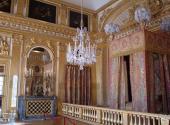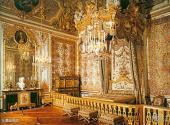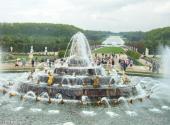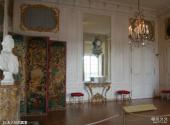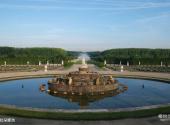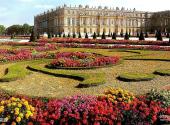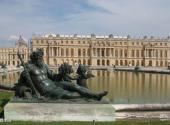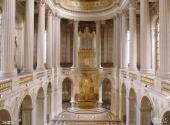
Scenic spot introduction:
The Palace of Versailles (French: Chateau de Versailles) is the largest and most luxurious royal palace building in European history. The palace is located in Versailles, capital of Yvelines Province, southwest of Paris, France. The overall architectural style is dominated by classical style. The facade is divided into three sections, vertical and horizontal. The building is symmetrical on the left and right, with neat contours. It looks solemn and majestic. It is an outstanding representative of the rational beauty of classical architecture. The interior decoration of the building is mainly Baroque style, and a few halls are in Rococo style.The Palace of Versailles was built by French King Louis XIII in the early seventeenth century. It experienced ups and downs in the following two hundred years. In its heyday, it was the center of aristocratic activities, art center and birthplace of cultural fashion in France and even Europe. Until the outbreak of the French Revolution under Louis XVI, it declined and fell into decay with the disappearance of the dynasty. Since 1833, the restored Palace of Versailles has been open to tourists as a historical museum.
Attractions distribution:
The construction of the Palace of Versailles began in 1624, when King Louis XIII of France bought 117 acres of land for 10,000 livres to build a hunting lodge. At that time, the Palace of Versailles was a two-story red brick building with only 26 rooms. The first floor was a furniture storage room and armory, and the second floor was the king's office, bedroom, reception room, wardrobe, and bedrooms for attendants. In 1660, King Louis XIV of France decided to move the royal court out of Paris, which was in chaos and noise due to constant riots by citizens against the royal family. He appointed designer André Le Nôtre and famous architect Louis Le Vau to build a new palace for him on the basis of the Versailles hunting lodge, and requisitioned 6.7 square kilometers of land for this purpose. In 1667, Le Nôtre designed the Versailles Palace. garden and fountains, Le Vau added new palaces to the west, north and south sides of the hunting palace, and the east facade of the original palace was preserved as the main entrance, and a Marble Courtyard In 1674, architect Jules Hardouin Mansart took over the Versailles project from Le Vau. He added the north and south wings of the palace, church , Orange Garden In order to attract residents to settle in Versailles, Louis XIV also built a large number of residential and office buildings in the town of Versailles. On May 6, 1682, Louis XIV announced that the French court would be moved from Paris to Versailles. In 1688, the main part of the Palace of Versailles was completed. In 1710, the entire Palace of Versailles and garden The construction of the palace was completed, and in order to accommodate his many "official mistresses", Louis XIV also built Grand Trianon and the Marly Palace; later, the French kings Louis XV and Louis XVI rebuilt Petit Trianon and Swiss Farm and other buildings.During the heyday of the Palace of Versailles, the entire palace had a total of more than 1,300 rooms, and was home to as many as 36,000 princes, noble ladies, princes, nobles, bishops and their servants. There were also 100 Swiss Guards, Scottish Guards, palace police, 6,000 Royal Guards, 4,000 infantry and 4,000 cavalry stationed at the palace. It was not only the largest, most magnificent and most luxurious palace building in Europe at the time, but also a center for aristocratic activities, an art center and the birthplace of cultural fashion in France and even Europe.
On October 6, 1789, Louis XVI was taken to Paris by the Parisian people during the French Revolution and beheaded. The history of the Palace of Versailles as the French court came to an end. In the subsequent Reign of Terror, the Palace of Versailles was looted many times by the people. The furniture, murals, tapestries, chandeliers and furnishings in the palace were looted, and the doors and windows of the palace were smashed and demolished. In 1793, the remaining artworks and furniture in the Palace of Versailles were transported to the Louvre in Paris, and it has since become a ruin. In 1833, King Louis Philippe of the Orleans Dynasty ordered the restoration of the Palace of Versailles and converted it into a historical museum.
Scenic spot qualifications:
World HeritageScenic spot features:
Cultural tours, architecture, museums, palaces, museumsTravel Notes of Travellers:
- Traveling Alone: 15 Days in Europe (Part 4) France
- Travel Guide: Five-Day Paris Tour Guide 2017
- Beijing Sunset: An Unforgettable European Trip → Paris
Best time to visit:
All seasons
Scenic spot location:
Europe > France > Paris
How to get there:
You can take the train to the Palace of Versailles from the Saint-Lazare train station or the Montparnasse train station. On the train, you can buy a ticket that combines the Palace of Versailles ticket with the SNCF (French National Railway Company) ticket, which is valid for one day.
Ticket and admission prices:
From Paris to Versailles, the entrance ticket and round-trip ticket are 21.15 euros per person, and those under 18 years old are free;
Tickets and round trip tickets from the 2nd and 3rd arrondissements to the Palace of Versailles are 24.7 euros per person;
Tickets and round trip tickets from the 4th arrondissement to the Palace of Versailles are 25.6 euros per person;
Tickets and round trip tickets from the 5th arrondissement to the Palace of Versailles are 27.2 euros per person;
Tickets and round trip tickets from the 6th arrondissement to the Palace of Versailles are 28.8 euros per person;
In addition, you can also reach the scenic area by taking bus A31 or RER line C and getting off at Versailles Rive Gauche station (the terminal station for direction C5).
Scenic area map:
3D real scene of scenic spot
Palace of Versailles ticket prices:
Versailles Palace combined ticket: July 4 to October 31, 25 euros/person; November 1 to March 31, 18.16 euros/person.
Versailles Palace: 15 euros/person, 10 euros/person after 3pm;
Petit Trianon : 5 euros/person, 3 euros/person after 3pm;
Four wheels Carriage Museum : 2 EUR/person;
Students and people under 18 years old can visit the above venues free of charge.
garden and the Jeu de Paume Room are accessible to all free of charge.
Scenic area opening hours:
Palace of Versailles:
(July 4 to October 31) 09:00-18:30, admission stops at 18:00;
(November 1 to March 31) 09:30-17:30, admission stops at 17:00;
In addition, it is closed to the public on Mondays, public holidays and official ceremonies.
Petit Trianon :
(July 4 to October 31) 12:00 to 19:30, last entry at 18:00;
(November 1 to March 31) 12:00 to 17:30.
Four wheels Carriage Museum : It is open to the public from 09:00 to 18:30 on weekends from April 1 to October 30 every year.
Jeu de Paume Room: Open on weekends from 12:30 to 18:30 from April 1 to October 30 every year.


